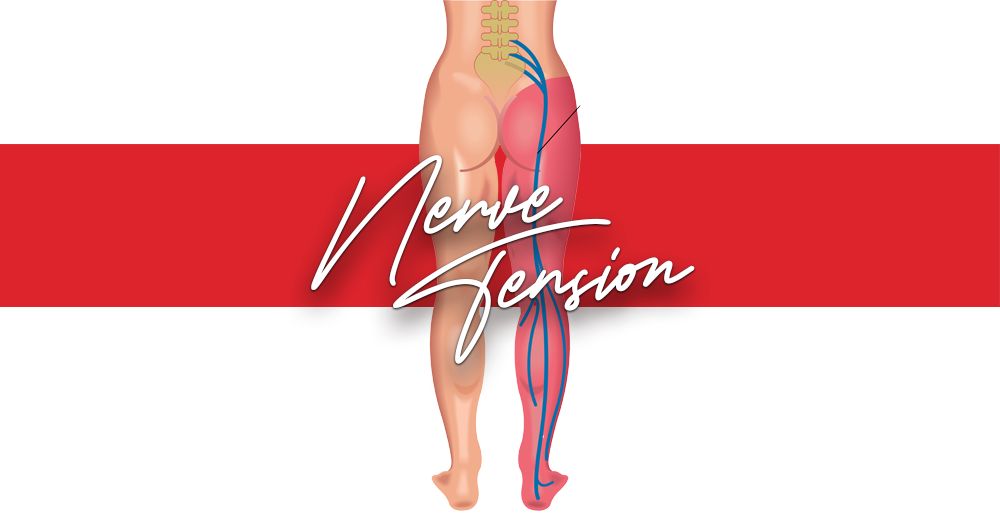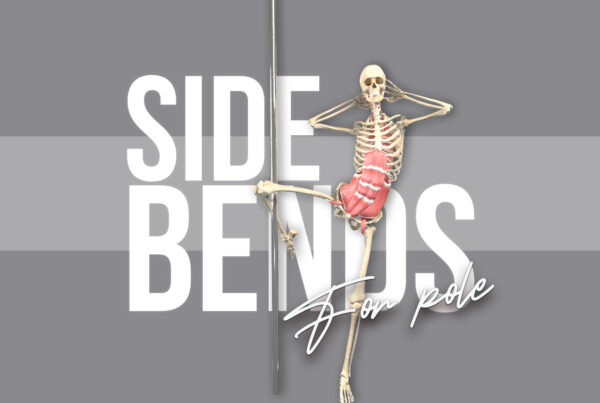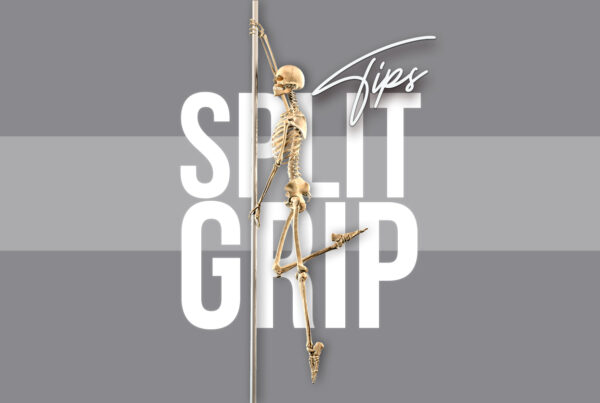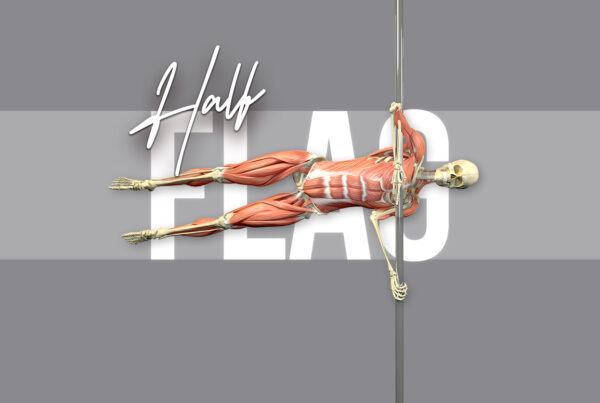A high level of hamstring flexibility is such a HUGE component of pole dance, but if all your stretching and strength work doesn’t seem to be paying off in the hamstring flexibility department, it’s worth a quick check-in to see if nerve tension might be holding back your splitty dreams!
I’m keeping this post short and sweet, but if you wanna nerd a bit more about hip flexion for pole dance (we’re talking: range of motion, muscular engagement and other juicy deets!), check out my previous post: ‘Hip flexion for pole! 6 nerdy facts!’.
Today, I just have a few key things to cover:
- What is this mysterious ‘nerve tension’ and how can it limit your flexibility?
- How to test if nerve tension may be holding back your hamstring flexibility!
- How to approach nerve tension in your training if this is a limiting factor for you!
1. What is this mysterious ‘nerve tension’ and how can it limit your flexibility?
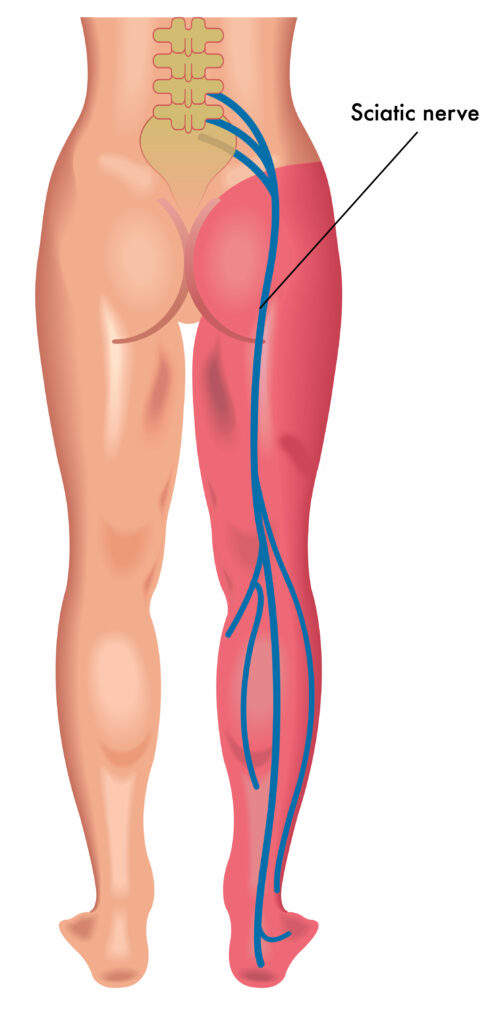
The sciatic nerve runs all the way from our spine to our feet. When we talk about ‘nerve tension’ in relation to hamstring flexibility, we’re basically talking about this nerve getting ‘stuck’ on other soft tissues that surround it. That ‘stickiness’ can limit our range of motion.
When we’re dutifully stretching our hamstrings, if this nerve is essentially ‘stuck’ and blocking the movement, we may not actually be stretching our hamstrings at all, but instead trying to ‘stretch’ this nerve. Side note: nerves don’t like to play this way!
2. How to test if nerve tension may be holding back your hamstring flexibility!
The good news is that testing out whether nerve tension is a limiting factor for you is pretty simple.
Here’s one super simple check-in which I use as part of my client onboarding movement screens…
I have my clients sit on the floor in a forward fold position, allowing their back to round and tucking their chin. We see how far they can reach and what it feels like with their feet flexed, then doing the same movement with the toes pointed.
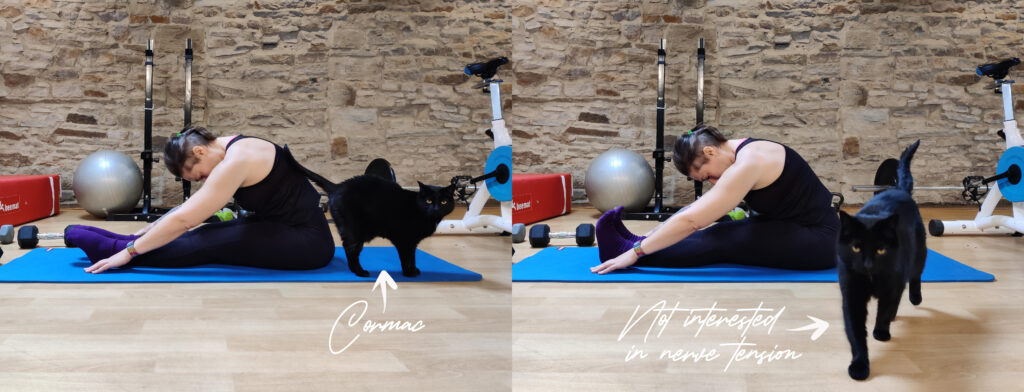
If they can reach much further with toes pointed vs flexed, or if it feels tighter with flexed feet, it’s a sign that nerve tension *may* be playing a part.
This is because the nerve is the only ‘structure’ that runs through all three joints (hip, knee and ankle), so adjusting the foot position shouldn’t restrict hamstring flexibility.
At this point, it’s worth repeating that this blog is just for general information purposes and absolutely not a substitute for medical advice! If you’ve done the above test and you think nerve tension may be a limiting factor for you, it’s also worth getting an appointment with a physio for a full movement test and evaluation – they’ll be able to confirm this for you and help you more accurately pinpoint the specific structures that are ‘sticky’ for you!
And if you’re experiencing pain, any loss of strength, tingling or other intense ‘nervy’ sensations – it’s even more important that you don’t follow the advice of blog posts on the internet! The information in this post – and the movement videos in it – may not be suitable for you!
3. How to approach nerve tension in your training if this is a limiting factor for you!
As I alluded to in #1 above, nerves don’t like to be ‘stretched’ in the same way that we stretch our muscles.
For our nerves, instead of holding the ‘stretch’, we aim to put one end of the nerve ‘on tension’ while creating ‘slack’ at the other end of the nerve, then switch between those two positions (tension on one end, slack on the other). This is called ‘nerve flossing’ or ‘nerve gliding’.
If you have a quick google of this, you’ll find loads of examples, but here’s a version that I usually start my clients on.
I usually programme 2 sets of 10 each side in warm ups – and it can be done regularly, but not intensively! Just remember that nerves require a more gentle approach than our muscles! We’re not trying to push through any sensations here!
In other words – don’t poke the bear! Just move gently and within a range that feels comfortable! Keep checking back in on your test to see if what you’re doing is working, and adjust appropriately!
Working more generally on all aspects of your hip, knee and ankle mobility is also important, alongside these kinds of targeted nerve flossing exercises! And again, if in doubt – get that physio assessment to check which parts of the puzzle are most relevant to you!
Love nerding about pole anatomy with me? I think you’ll enjoy my book, Pole Anatomy!
Wanna know how to apply all this nerdy knowledge into your training for pole? Of course you do! Check out my book, Strength and Conditioning for Pole and let’s get to work!


